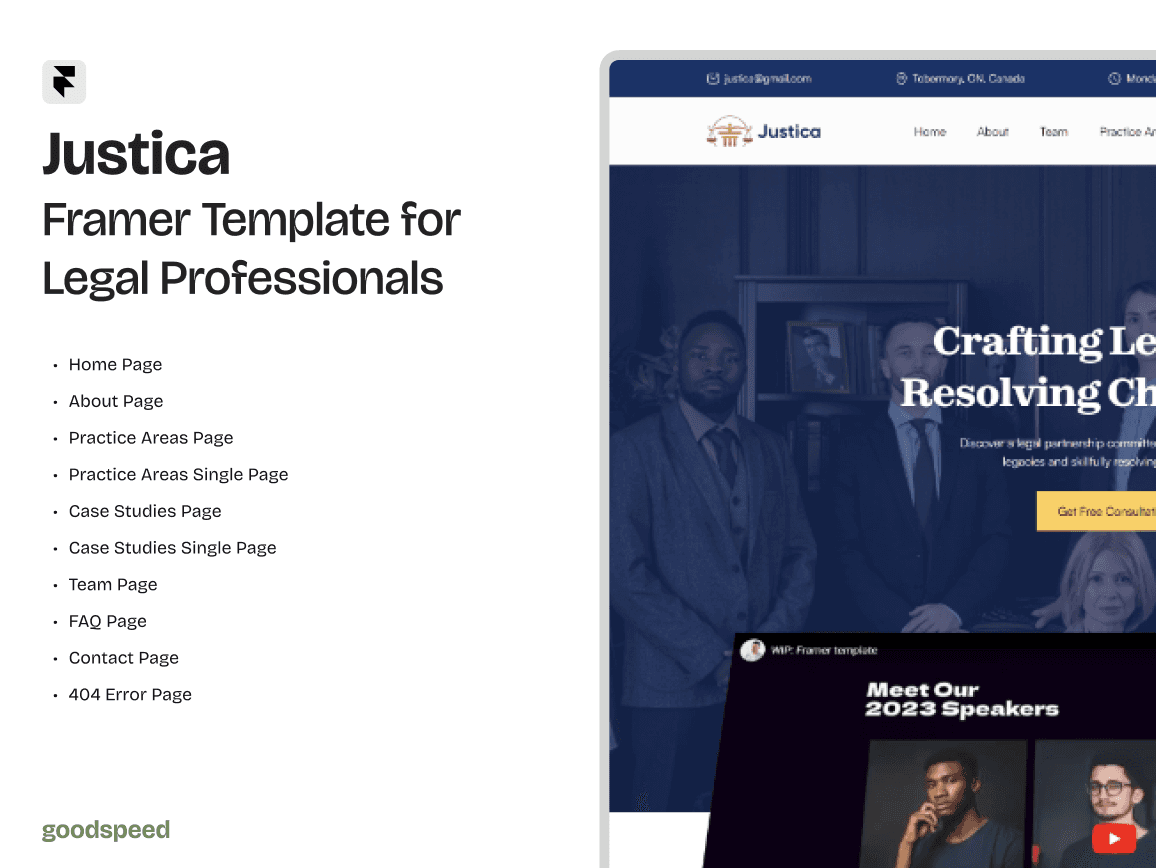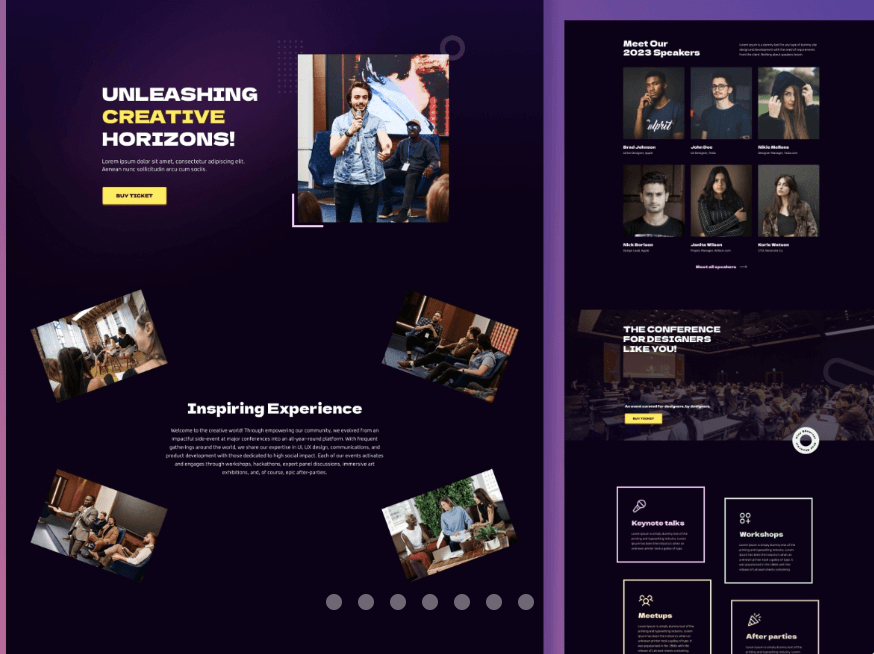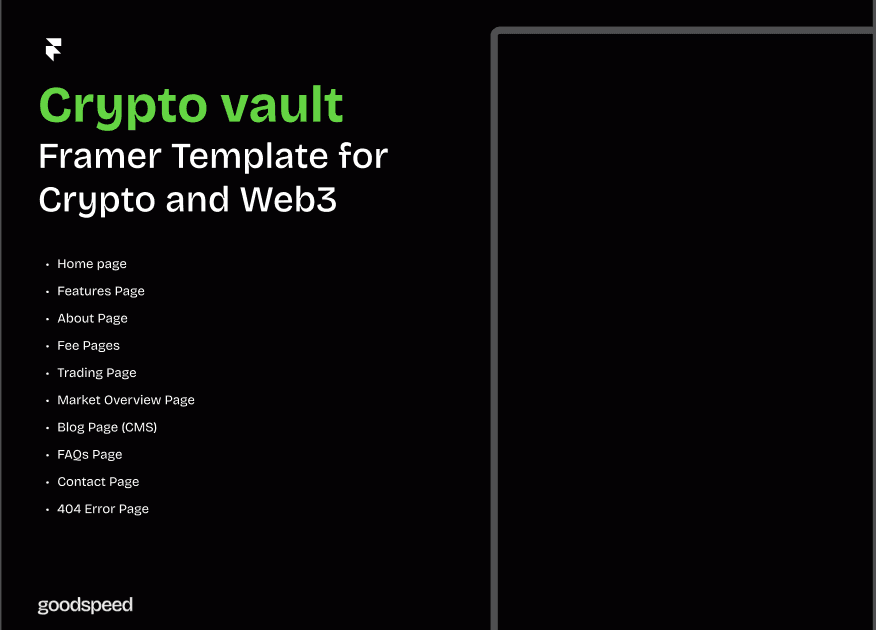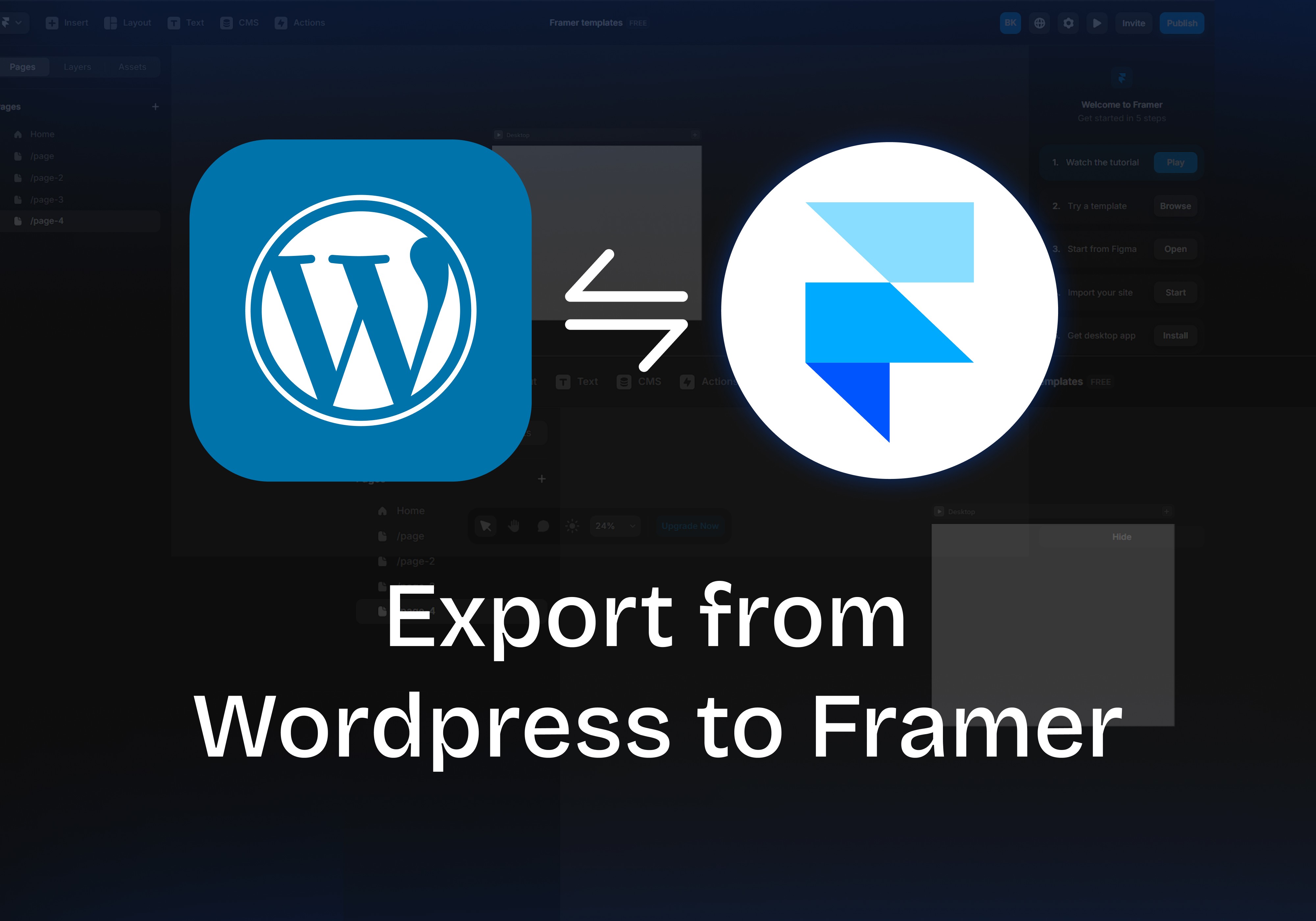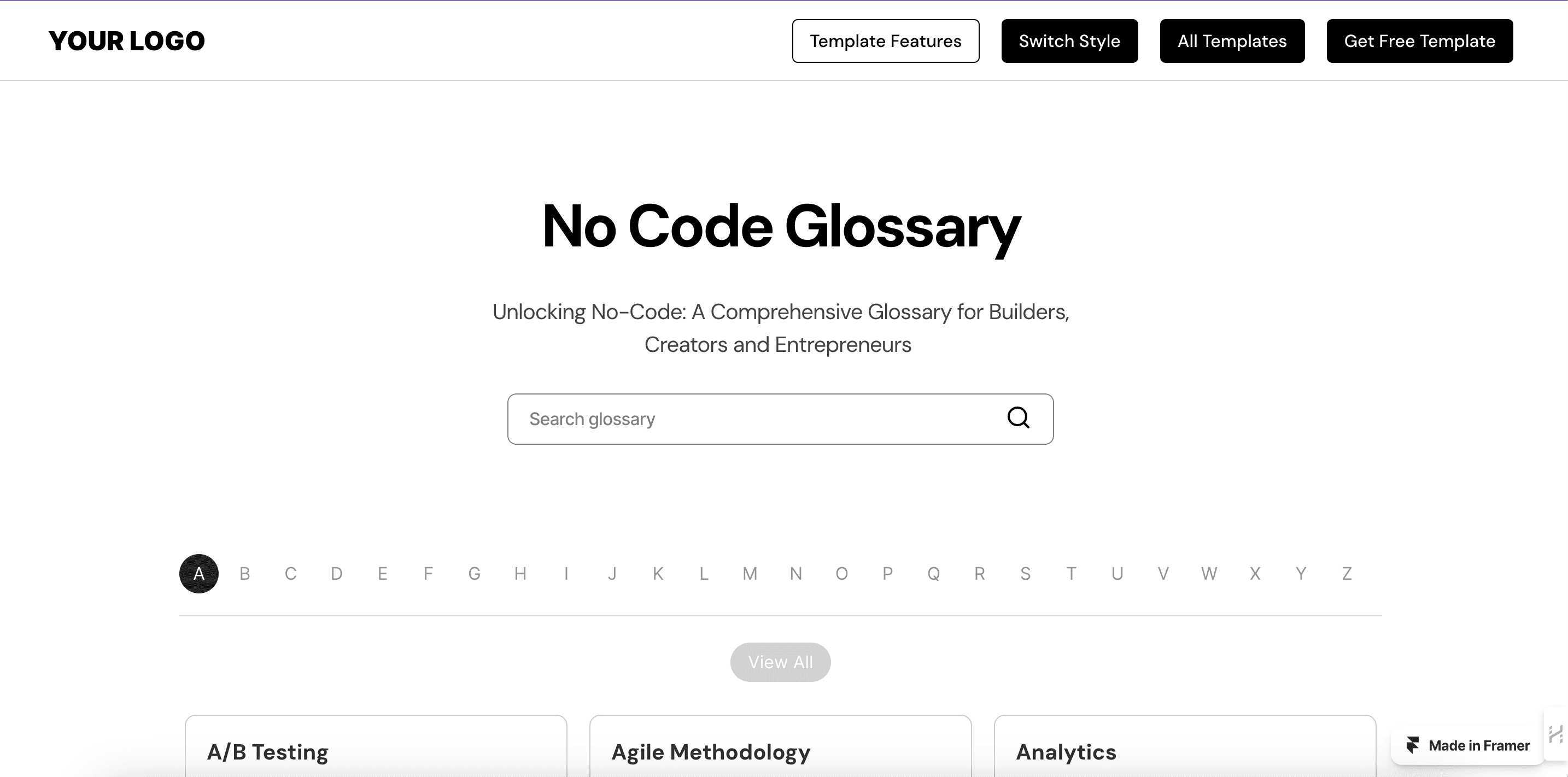Table of Contents
For early-stage startups, content is more than just words on a page—it’s a strategic asset that builds credibility, attracts investors, and drives organic growth. A well-maintained blog or news section can be the difference between brand invisibility and industry authority.
However, traditional content management systems (CMS) often create barriers, from high costs to complex integrations that slow teams down.
Framer CMS for startups eliminates these challenges, offering a seamless, design-integrated CMS that empowers businesses to manage content with ease. Unlike traditional platforms, Framer for startups provides speed, cost efficiency, and a unified brand experience—all in one place.
This guide explores why a dedicated CMS is essential for startups, Framer’s key features, and how to maximise its potential for your business.
1. Why a Dedicated CMS Matters for Startups
A content strategy is only as strong as the tools behind it. Startups operating in fast-paced industries need a CMS that supports agility, growth, and user engagement. However, not all content management systems are designed with early-stage businesses in mind.
1.1 Importance of Content in Early-Stage Startups
Startups often struggle with visibility, and a strong content strategy is key to cutting through the noise. Regular blog updates and industry insights establish thought leadership, making it easier to gain trust from investors, customers, and search engines.
For example, a startup in fintech might publish insights on regulatory changes, demonstrating expertise while improving search rankings. Given that 75% of users never scroll past the first page of search results, startups that fail to prioritise content risk losing potential business to more visible competitors.
Beyond SEO, a dedicated CMS allows for consistent brand storytelling, ensuring your message remains clear and cohesive. Whether it's a funding announcement, product launch, or customer success story, an accessible CMS makes it easy to publish and update content without delays.
Framer for early-stage startups can be especially useful for founders managing content without a dedicated marketing team, as it allows for easy editing, publishing, and optimisation—all within a no-code environment.
1.2 Challenges with Traditional CMS Solutions
Many startups default to popular CMS platforms like WordPress or Contentful, only to realise later that these solutions come with significant drawbacks:
High Development Costs: Hiring developers to customise a CMS or fix performance issues can drain limited resources.
Complexity: Non-technical team members often struggle with CMS interfaces that require coding knowledge.
Integration Issues: A CMS that doesn’t align with your design system can create inconsistency across marketing pages.
A poorly optimised CMS can also slow down your site, hurting engagement. Learn how startups can improve performance in "Migrating from WordPress to Framer: A Step-by-Step Process."
To maximise site performance and user retention, consider investing in our specialised Framer speed optimization services, which can significantly reduce loading times and boost conversions
2. Overview of Framer’s Built-In CMS Features
Framer offers a modern approach to content management, allowing startups to design, develop, and publish content—all in one platform. Unlike third-party CMS solutions that often require custom workarounds, Framer’s built-in CMS integrates seamlessly into your site’s design, maintaining visual consistency and speed.
2.1 Intuitive Visual Editor
Framer’s drag-and-drop editor eliminates the complexity of traditional CMS platforms, making it easy for non-tech teams to manage content. Unlike WordPress, which often requires manual formatting and plugin management, Framer allows users to:
Edit pages in real-time without affecting live content.
Ensure design consistency by integrating directly with your Framer templates.
Make updates without coding, reducing dependency on developers.
If you've just started setting up a Framer-powered site, check out "A Step-by-Step Guide to Launching Your Startup’s Website with Framer."
2.2 Dynamic Content Blocks & Templates
Unlike static website builders, Framer provides flexible content blocks designed for blogs, news sections, and case studies. These pre-built templates ensure a professional layout while allowing customisation to match your brand identity.
For instance, a SaaS startup can use Framer’s content blocks to create detailed product update pages, complete with images, videos, and interactive elements. This not only improves engagement but also ensures that each update aligns with the overall site aesthetic.
2.3 Integrated SEO & Content Optimisation Tools
Framer’s CMS is built with SEO best practices in mind, giving startups a competitive edge in organic search rankings. Some key features include:
Automatic meta tag management for blog posts and news updates.
Responsive design capabilities, ensuring content is optimised for mobile and desktop users.
Faster load times with pre-rendered pages, which can improve bounce rates.
Framer’s pre-rendering improves Google Lighthouse scores, making it a strong choice for startups focused on SEO.
Formula Bot’s migration to Framer with Goodspeed resulted in 75% faster loading speeds and a jump from the 6th to 2nd rank on Google- all thanks to Framer’s robust CMS and fast loading times.
3. Key Benefits of Using Framer’s CMS for Startups
A CMS should do more than just store content—it should enhance the entire publishing workflow. Framer CMS for startups is designed to streamline content management, reduce dependencies on developers, and improve performance—all while maintaining a consistent brand experience.
3.1 Speed and Agility in Content Publishing
Startups need the ability to publish updates quickly without technical bottlenecks. Framer for startups simplifies this process with:
Real-time previews—teams can instantly see how content will appear before publishing.
Instant deployment—edits and updates go live without requiring developer intervention.
Seamless collaboration—multiple team members can work on content simultaneously.
Speed isn’t just about convenience—it directly impacts user engagement, reinforcing why fast-loading content is crucial.
3.2 Cost Efficiency and Resource Savings
Startups often operate on tight budgets, making cost-effective tools essential. Traditional CMS platforms can become expensive due to:
Ongoing developer costs for maintenance and customisation.
Third-party plugins and add-ons needed for SEO and performance optimisation.
Hosting expenses, which can escalate as traffic scales.
With Framer for early-stage startups, everything is included in one platform, reducing overall content management expenses. Instead of spending thousands on custom CMS development, founders can invest in growth initiatives like paid marketing or customer acquisition.
For startups looking to further simplify content management and ensure rapid launches, partnering with a specialised Framer agency like Goodspeed can streamline the entire process, from setup to ongoing optimisation.
Also, compared to competitors like Webflow that start at $14/month, Framer starts at just $5/month, making it one of the most affordable all-in-one content solutions.
3.3 Enhanced Brand Consistency and User Experience
A fragmented CMS can lead to inconsistencies in typography, layout, and branding—a common issue when using third-party solutions. Framer’s CMS ensures that:
Every blog post matches the brand’s design guidelines without additional formatting.
Typography, colour schemes, and layouts remain uniform across all pages.
Dynamic content blocks allow for modular content updates without disrupting aesthetics.
4. Practical Steps for Setting Up & Managing Content with Framer’s CMS
Framer’s built-in CMS is designed for ease of use, even for teams without technical expertise. Here’s how startups can set up and manage their blog or news section with Framer.
4.1 Getting Started with Framer’s CMS
Connect Your Domain – If you’re migrating from another CMS, ensure all redirects are properly configured to avoid SEO losses.
Choose a Template – Framer provides pre-built content structures that can be fully customised.
Plan Your Content Hierarchy – Define categories for blogs, news updates, and resources. A well-structured site improves user navigation and SEO rankings.
For a step-by-step breakdown, refer to "Step-by-Step Guide to Purchasing and Setting Up Your First Framer Template."
4.2 Creating and Publishing Your First Post
Once your site is structured, it’s time to publish content efficiently. Framer CMS simplifies this process by offering:
Drag-and-drop content blocks – Easily insert text, images, and interactive elements.
Scheduling & Draft Mode – Plan posts in advance and store unpublished drafts.
SEO Meta Management – Optimise headlines, descriptions, and alt tags for better search rankings.
If a SaaS startup launches a new feature, it can create an announcement post within minutes instead of waiting on a developer.
4.3 Optimising Content for SEO & Engagement
Even the best content won’t perform well if it isn’t SEO-friendly. Framer CMS provides:
Automatic Image Optimisation – Reducing file sizes without quality loss.
Pre-rendering for Faster Load Speeds – Ensuring content is indexed efficiently by search engines.
Mobile-Friendly Design – Google prioritises responsive sites in rankings.
Learn more about "How to Optimise Images and Assets on Your Framer Website for Faster Loading" to improve speed and engagement.
5. Best Practices for Ongoing Content Management
Framer’s CMS is designed for long-term content scalability. To keep a startup’s blog effective, consistency and strategic optimisation are key.
5.1 Consistent Content Updates and Iteration
Use an editorial calendar to ensure a steady content flow.
Update old content to keep it relevant—especially evergreen topics.
Leverage analytics to track user engagement and refine future content.
5.2 Maintaining Brand Consistency
A startup’s content and design should feel cohesive across all channels. Framer CMS enables this by:
Providing reusable content blocks for headers, footers, and section layouts.
Allowing inline styling to maintain brand voice.
Centralising content management so updates reflect across multiple pages instantly.
Read "How Non-Tech Founders Can Easily Manage Their Websites with Framer" for a hands-on approach to content management.
5.3 Leveraging Analytics for Continuous Improvement
Framer integrates GDPR-compliant analytics, helping startups refine their content strategy. Key actions include:
Monitoring bounce rates and engagement to identify weak spots.
A/B testing headlines and CTAs for better conversion rates.
Adjusting post frequency based on peak traffic periods.
Learn how to track content effectiveness in "Essential Tools for Monitoring and Optimising Your Framer Website’s Performance".
A startup’s ability to scale often depends on how efficiently it can manage content, engage audiences, and optimise for search engines. Framer CMS for startups eliminates the friction of traditional platforms, offering a seamless solution that combines design flexibility with robust content management.
By leveraging Framer for startups, businesses can publish content faster, maintain brand consistency, and reduce reliance on external developers—all while ensuring their website remains high-performing and optimised for search engines.
Whether you're launching a blog, updating company news, or publishing thought leadership content, Framer for early-stage startups provides an intuitive, cost-effective way to do so without technical barriers. Experience the difference first-hand. Try Framer’s CMS on a pilot project today or book a free consultation to get the expert Framer guidance you need.


